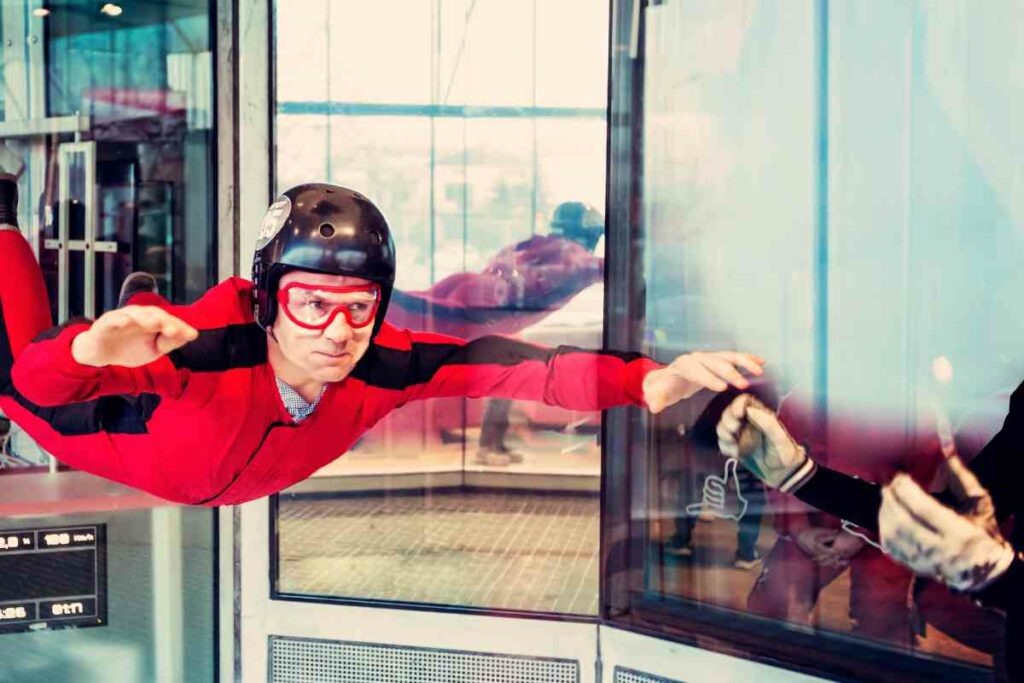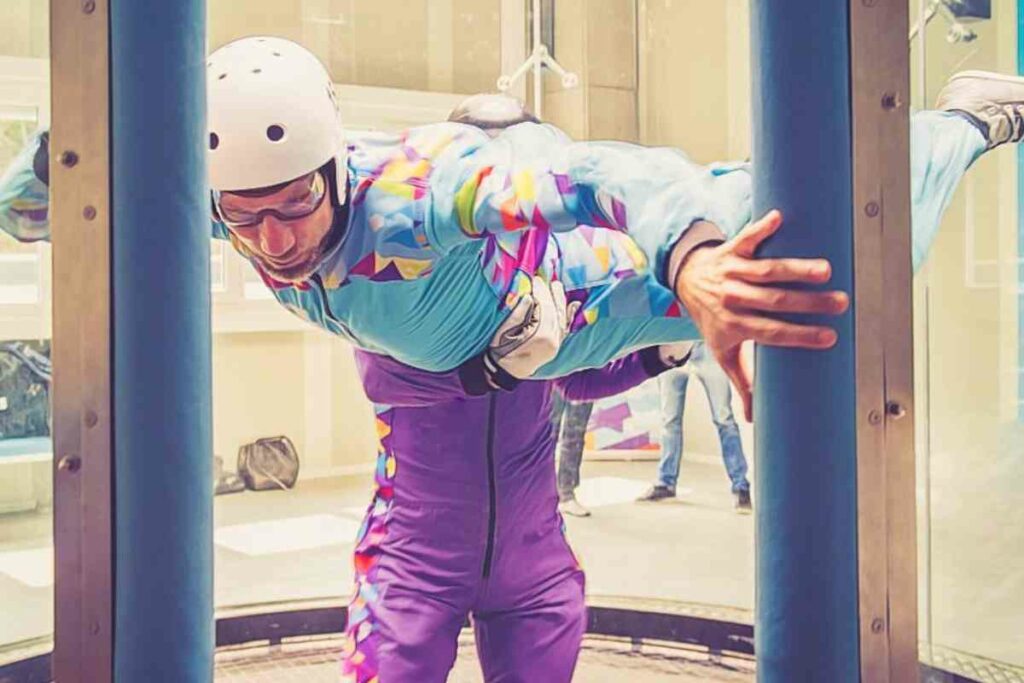Are you ready to take the plunge into indoor skydiving but unsure about how much training is necessary before hitting the wind tunnel?
In this blog post, we’ll break down what to expect during your first session and how much training is required for both safety and enjoyment.
Get ready to soar through the air like never before!
How Much Training Is Required Before Trying Indoor Skydiving?

To be honest, indoor skydiving is not very complicated. You just need to know a few basics before you start.
It’s important to listen carefully to the instructor who will give you clear guidelines on how to position your body and how to breathe during the flight.
Read before you go – Can You Indoor Skydive If You Have a Medical Condition?
Typically, most indoor skydiving facilities provide training sessions that usually last around 30-45 minutes. During this time, beginners get comfortable with the equipment as well as learn some basic flying techniques.
Training required before trying indoor skydiving requires:
- Pre-flight briefing
- Basic body control
- Hand signals
- Safety procedure
The good news is there’s no prior experience or physical strength needed for indoor skydiving since everything depends on proper posture and control of your body. Therefore there are few risks involved in it.
Any individual can try indoor skydiving after going through an orientation session even if they have zero experience in aviation or sports activities!
Looking to level up your skills? Feed your curiosity and quench your thirst for knowledge with our Indoor Skydiving Beginners Guide!
Why Indoor Skydiving Training Is Necessary?
Indoor skydiving training is necessary because it helps you to learn the basics of flying and control your body in a wind tunnel.
Without proper training, you may not be able to balance yourself properly, which can lead to dangerous situations.
You’ll also learn how to communicate with your instructor during flight, which is important so that they can help guide and correct any mistakes you make.
Furthermore, indoor skydiving training gives you confidence and prepares you for advanced techniques like flips and spins safely without risking potential injuries caused by traditional free-fall diving.
Training isn’t only beneficial for beginners. Even experienced skydivers should continue their indoor skydiving sessions as part of their regular routine since it allows them to work on new skills without having fear or altitude sickness limit them.
The value of undergoing an indoor skydiving course cannot be overstated; whether you’re an amateur or professional flier seeking more practice opportunities indoors or someone with little-to-no experience but curious about this exciting activity.
Components of Indoor Skydiving Training
When you first step into an indoor skydiving facility, it’s easy to feel overwhelmed. The rush of air and the daunting experience can be intimidating.
But fear not! Indoor skydiving training is broken down into several components, each designed to make your experience safe and enjoyable.
Safety Briefing
First and foremost, every indoor skydiving session begins with a thorough safety briefing from a certified instructor.
You’ll learn about proper body positioning, hand signals for communication in the tunnel, and how to use your breath to control your movements.
Gear Up
Next comes gear-up time! You’ll suit up in a jumpsuit, helmet, and flight goggles provided by the facility. Don’t forget earplugs or headphones – they’re essential for blocking out the noise of the wind tunnel!
Body Position Training
Once suited up, it’s time for body position training. This may involve static holds outside of the wind tunnel or practicing flying techniques within it.
Your instructor will provide feedback on what you need to improve as you work on perfecting your form.
Also Helpful ?
Flying Solo
Eventually (depending on skill level), participants are allowed to fly solo within the wind tunnel with close supervision from an instructor nearby at all times while giving guidance through hand signals given by them inside ıthe tunnel.
Advanced Training
For those who want to take their skills to the next level, many facilities offer advanced training programs.
These may include coaching on complex maneuvers or ways to transition between different flying positions.
Cooldown and Debriefing
After your session is complete, it’s time for cooldown and debriefing.
This involves stretching out any sore muscles from the experience and chatting with your instructor about what you learned during the session – including areas where you excelled and those that could use some work!
Conclusion ?
Indoor skydiving is a thrilling and unique activity that requires minimal training before getting started.
With just a few simple instructions and safety procedures, anyone can experience the excitement of flying in an indoor wind tunnel.
So what are you waiting for? Schedule your session today and enjoy the thrill of freefall without the need to jump out of a plane!







